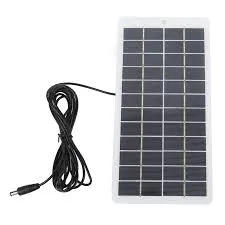Current Market Prices for 450 Watt Solar Panels and Their Impact on Renewable Energy Adoption
Understanding the Cost of 450W Solar Panels
As the world shifts towards sustainable energy sources, solar panels have become increasingly popular for both residential and commercial applications. One of the standout options in the market today is the 450W solar panel, which offers a balance of efficiency and cost-effectiveness. However, understanding the price of these panels can be a bit complex, as it varies based on several factors including the manufacturer, technology, installation, and regional market conditions.
The Basics of 450W Solar Panels
A 450W solar panel is capable of generating 450 watts of electricity under standard testing conditions. This higher wattage means fewer panels are needed to achieve the same energy output compared to lower wattage options. This can lead to overall savings, not just in equipment costs but also in installation labor and space requirements. As a result, they have gained traction among homeowners looking to maximize their roof space as well as commercial operations seeking to reduce their energy bills.
Pricing Factors
1. Manufacturers and Brands The price of 450W solar panels can vary significantly depending on the manufacturer. Renowned brands might charge a premium for their products, given their reputation for quality and durability. On the other hand, lesser-known brands might offer lower prices, which can be tempting but may raise concerns regarding reliability and warranty.
2. Technology and Efficiency The type of technology used in the solar panel can also influence the price. There are different types of solar panels, including monocrystalline, polycrystalline, and thin-film. Monocrystalline panels generally offer higher efficiency and thus can be more expensive compared to polycrystalline counterparts.
3. Location The cost of solar panels in different regions can vary due to local demand, shipping costs, and state or federal incentives. Areas with higher solar energy adoption or strong incentives can see prices adjust accordingly. Additionally, some regions may have more stringent regulations impacting installation costs.
450w solar panel price

4. Installation Costs While the price of the panels themselves is important, installation costs also play a crucial role. The total system price can include labor, permits, and additional equipment like inverters and mounting systems. Hiring a reputable installer may come at a premium, but it often ensures that the system operates efficiently over its lifespan.
5. Economies of Scale Purchasing in bulk can lead to significant savings. For businesses or large installations, buying several panels at once might come with discounts, making 450W panels even more affordable on a per-unit basis.
Average Pricing
As of recent market trends, the price of individual 450W solar panels generally hovers around $250 to $400. However, this is just the cost for the panels themselves. When factoring in installation and other components, homeowners might expect to pay between $1.50 to $3.00 per watt installed. This leads to a total system cost ranging from approximately $675 to $1,350 for a 450W setup, depending on the aforementioned variables.
Long-Term Investment
While the initial costs can seem daunting, investing in solar technology offers long-term financial benefits. Solar panels can significantly reduce electricity bills, and many regions offer tax incentives and rebates that can offset the upfront expense. Additionally, the rising trend of renewable energy means that the value of homes with solar installations may see an uptick over time.
Conclusion
In summary, the price of 450W solar panels is influenced by a variety of factors, including brand reputation, technology used, location, and installation costs. As more consumers embrace renewable energy solutions, understanding these pricing dynamics is crucial for making informed decisions. Investing in solar energy not only contributes to a sustainable future but can also lead to substantial savings in energy costs over time. As the world continues to prioritize clean energy, the demand for efficient solutions like 450W solar panels is likely to grow, shaping the landscape of energy consumption for years to come.
-
Unlocking Energy Freedom with the Off Grid Solar InverterNewsJun.06,2025
-
Unlock More Solar Power with a High-Efficiency Bifacial Solar PanelNewsJun.06,2025
-
Power Your Future with High-Efficiency Monocrystalline Solar PanelsNewsJun.06,2025
-
Next-Gen Solar Power Starts with Micro Solar InvertersNewsJun.06,2025
-
Harnessing Peak Efficiency with the On Grid Solar InverterNewsJun.06,2025
-
Discover Unmatched Efficiency with the Latest String Solar InverterNewsJun.06,2025







